The Apple iPhone 11, 11 Pro & 11 Pro Max Review: Performance, Battery, & Camera Elevated
by Andrei Frumusanu on October 16, 2019 8:30 AM ESTCamera - Daylight Evaluation Continued
We continue on with more HDR heavy shots as well as going into indoor shots.

[ iPhone 11 Pro ] - [ iPhone XS ] - [ iPhone X ]
[ S10+(S) ] - [ S10+(E) ] - [ Pixel 3 ]
[ P30 Pro ] - [ Xperia 1 ] - [ G8 ]
The first scene on this page showcases similar changes for the new iPhone 11: the new HDR is able to extract better detail and tone down the overexposed areas compared to the XS. Also very evident is the presence of more saturation in the trees, more accurately depicting their color.
The telephoto showcases the same SmartHDR changes as it’s able to better handle the highlights.
A very good showcase by the wide-angle camera in this scene – it’s among the best renditions.
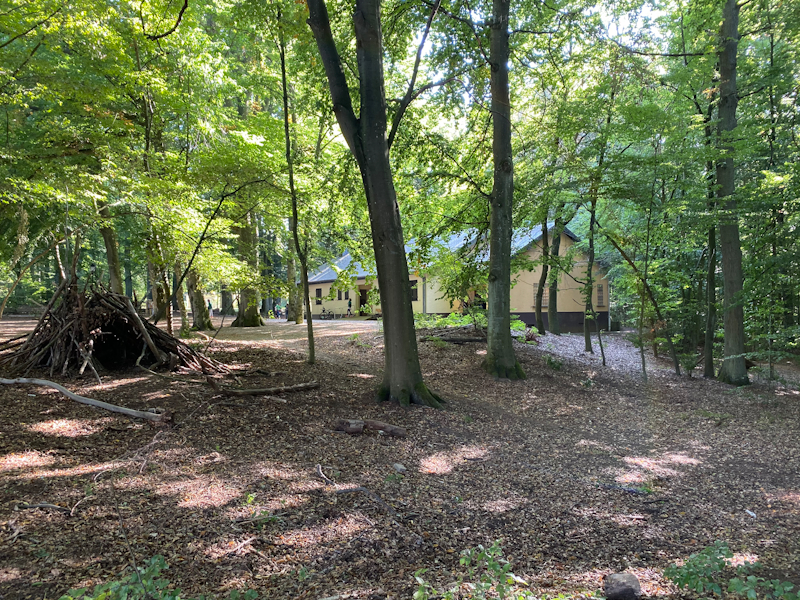
[ iPhone 11 Pro ] - [ iPhone XS ] - [ iPhone X ]
[ S10+(S) ] - [ S10+(E) ] - [ Pixel 3 ]
[ P30 Pro ] - [ Xperia 1 ] - [ G8 ]
I’ve noticed a lot of phones have issues with this shot in terms of their color balance, as sometimes they tend to veer off too much in the grey. The new iPhone 11 Pro here improves in comparison to the XS as it’s able to more properly maintain the greens of the leaves.
The telephoto module takes advantage of a better color accuracy, but here’s extremely evident that it’s a downgrade in terms of detail compared to the XS.
The wide-angle is excellent in term of exposure, however detail is drastically lacking throughout the whole scene, as it’s quite a blurry mess, and very much lagging behind the S10, particularly the Exynos variant.
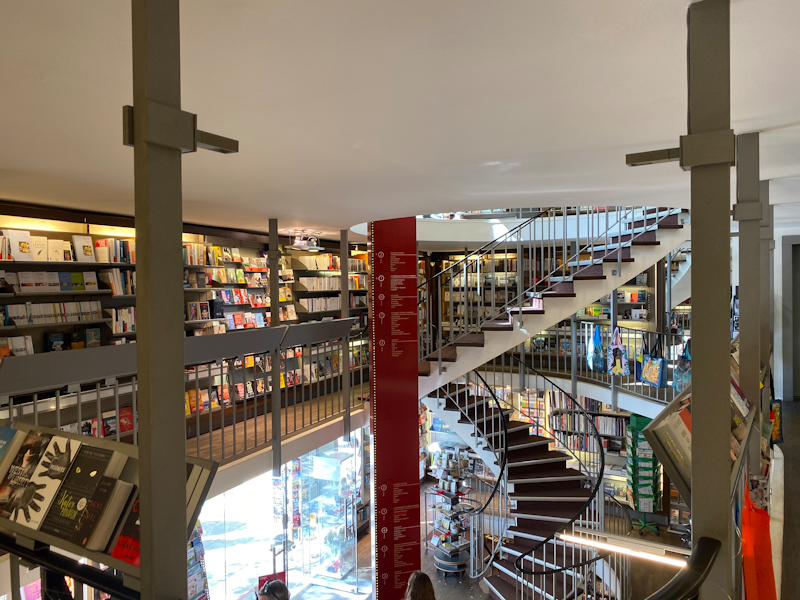
[ iPhone 11 Pro ] - [ iPhone XS ] - [ iPhone X ]
[ S10+(S) ] - [ S10+(E) ] - [ Pixel 3 ]
[ P30 Pro ] - [ Xperia 1 ] - [ G8 ]
Moving indoors with still quite good lighting, it’s again hard to tell apart the iPhone 11 from the XS. The 11 is a bit brighter but other than that they’re pretty much equal. The telephoto shots are also too close to clearly determine which one is better.
The wide-angle is good, but lacks the same sharpness as showcased on the S10. Apple here both on the main and wide-angle seems to have a limited dynamic range compared to the Samsung, as evidenced by the blown out outdoors part of the shot.
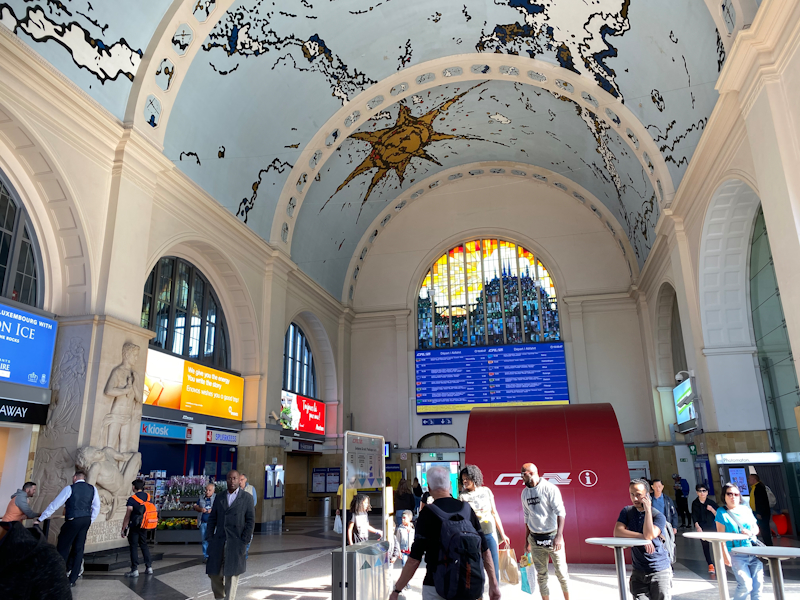
[ iPhone 11 Pro ] - [ iPhone XS ] - [ iPhone X ]
[ S10+(S) ] - [ S10+(E) ] - [ Pixel 3 ]
[ P30 Pro ] - [ Xperia 1 ] - [ G8 ]
The local tone mapping of the HDR of the iPhone 11 improved a bit on the XS, however it’s still not handling some elements correctly, and blowing out the stained glass as well as the orange commercial sign on the left, both which certainly weren’t that bright.
The telephoto on the 11 is a lot better in this shot and the legibility of the signage is definitely better.

[ iPhone 11 Pro ] - [ iPhone XS ] - [ iPhone X ]
[ S10+(S) ] - [ S10+(E) ] - [ Pixel 3 ]
[ P30 Pro ] - [ Xperia 1 ] - [ G8 ]
In indoor shoots again for the main camera it’s a wash between the 11 and the XS. In some areas the 11 fares better while on other textures the XS seems sharper. Both the phones however had issues with color temperature as it’s too warm.
Portrait Mode
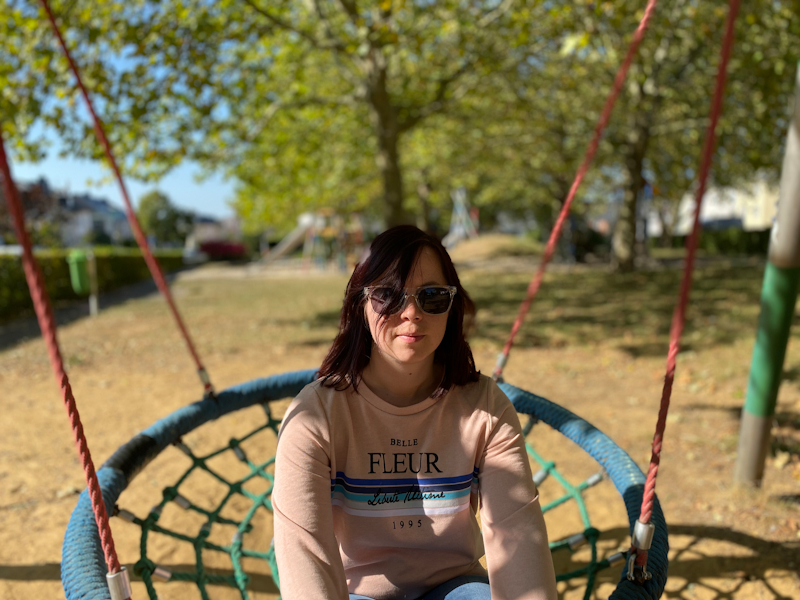
[ iPhone 11 Pro ]
[ iPhone XS ] - [ iPhone X ]
[ Galaxy S10+ (E) ] - [ Galaxy S10+ (S) ]
For portrait pictures, the big new addition for the iPhone 11 series is that you can now capture with the main camera sensor while the wide-angle serves as the depth sensor. It’s still possible and sometimes maybe preferable to use the telephoto lens for portrait shots.
The problem is that it seems that Apple hasn’t really improved the segmentation algorithm on the new iPhones and things can be relatively imperfect. This is particularly visible in the wider-angle shots with the “whiteout” effect, and the results just aren’t very good.
The fun thing about this scene with the swing is we can see the gradual effects of the bokeh on the ropes – that is, we can see that it’s not very gradual on the iPhones as we can clearly delineate where different levels of bokeh blur are applied. This is also partly visible on the Exynos S10, but the Snapdragon S10 has excellent segmentation as well as a smooth and gradual 3D depth blur.
iOS 13.2 Deep Fusion
I had started off the review with iOS 13 including most the daylight pictures, after which I switched over to iOS 13.1 for most testing. Finally, Apple had released a beta for iOS 13.2 and I had to take a look at the new Deep Fusion feature and how it behaves.
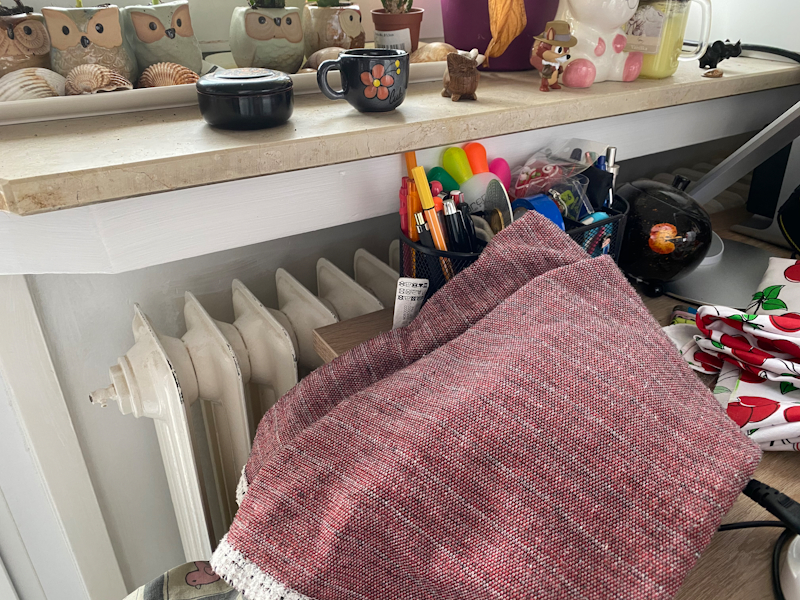
[ iPhone 11 Pro iOS 13.2 ]
[ iPhone 11 Pro iOS 13.1.2 ]
[ Galaxy S10+ (E) ]
I was rather shocked to see the difference in detail that the new Deep Fusion feature can make, and you definitely don’t even have to view the pictures at full resolution to notice a difference in sharpness as well as increased detail.
Essentially Deep Fusion should work similarly to Google’s super resolution zoom technology, just Apple is using it to increase the amount of details captured at the full frame resolution. With the feature enabled the camera is able to bring out finer textures in textiles or rougher materials with fine-grained details that otherwise were blurred out by the camera.
I tried a few shots outdoors, however as Apple mentioned it doesn’t seem to work in coordination with Smart HDR and the last comparison shot doesn’t really show any major difference in detail between iOS 13.1 and 13.2.
Daylight Camera Capture Conclusion – Wait for Deep Fusion retake?
The main selling point of the new iPhones was the addition of the ultra-wide-angle camera module. Indeed, this opens up a totally new capture experience for users and I do think it makes a lot of sense to retain this module on the regular iPhone 11 rather than having a telephoto module. The wide-angle camera had been pioneered by LG a few generations ago, but last year it was Huawei which brought it to the mainstream. And now in 2019 it’s been a must-have for every vendor, and it would have been shocking if Apple hadn’t adopted it.
Quality-wise, Apple's wide-angle module does adequately well, as it’s definitely one of the better modules out there. Still, there’s been many shots where the pictures ended up notably less sharp than on the Galaxy S10 or Huawei’s phones. HDR had also been a bit better for the competition in some scenarios.
On the main camera, improvements for this generation were relatively muted when it comes to the daylight results. There just isn’t very much difference to the XS. We do note that the color temperature is slightly improved, saturation is sometimes more accurately captured, and HDR is able to now handle highlights better. Still I had expected a bit more – sometimes the competition is able to showcase better dynamic range and thus capture more of a scene. The level of detail between the iPhone 11 series and the XS are essentially identical.
The telephoto module changes on the 11 Pro are a bit odd. A lot of the scenes showcased the new phone as producing noisier shots or just having less detail. The optics of the module have changed, as it moved from an f/2.4 aperture to an f/2.0, so I do wonder if that’s the reason for the discrepancy. Sometimes the new module wins out, but other times there isn’t any improvement or even slight regressions. It’s not a deal-breaker or a problem at all, but it’s still odd to see this development from Apple.
Portrait mode on the main sensor is a new addition to the camera experience, but the issue is that Apple really hasn’t improved its segmentation and depth sensing capabilities. Qualcomm’s ISP here looks to be superior as it’s able to produce better bokeh effects.
Finally, Deep Fusion could very well be a game-changer for the camera. I was extremely surprised by the increased quality in sharpness and detail that the new mode brings. I didn’t have sufficient time to properly evaluate it in a wider range of scenarios and against more phones, but it could very well be one of the features that puts the iPhone 11 series ahead of other phones. It’s something we definitely have to revisit in the upcoming Pixel 4 and Mate 30 Pro reviews as we redo the whole camera comparison with iOS 13.2.










242 Comments
View All Comments
Zerrohero - Wednesday, October 16, 2019 - link
Just get the battery replaced at authorized repair after three years or whenever it starts to go bad.And as you very well know, the throttling (if it kicks in) can be toggled on/off in the settings.
I have a two year old iPhone X and the battery capacity is at 91%.
michael2k - Wednesday, October 16, 2019 - link
You're asking that the phone under report it's battery reserve and shut the phone down at 40% battery to preserve battery longevity?Because that would be the effect. So instead of a battery that lasts 14 hours for the first year and then 10 hours the second, it would 'shut down' after 11 hours the first year, and 'shut down' after 11 hours the second year, and 'shut down' after 11 hours the third year, before the degradation actually causes the battery life to actually be 10 hours in year four.
melgross - Wednesday, October 16, 2019 - link
Wow! That makes no sense. All phones slow down over time, and all batteries hold less charge. Apple’s are t worse, if anything, they’re better. My Max, from last year still reads 100% on battery health after more than 11 months of fairly heavy daily use. I’d like to see other phones that do better.shompa - Thursday, October 17, 2019 - link
Look at intel /AMD / Qualcomm. They list a "turbo speed" that is not guaranteed. But customers believe it is. That's why they don't need to downclock stuff because they never need to hit their speeds. Apple is the last vendor having a real CPU speed and holds it. I have had a multitude of Intel CPUs that under-deliver in speed and as a customer you can't do anything. The service centers simply don't understand the problem since they only do a CPID check and says "it works". Take any intel laptop and fire up an H265 encode and watch the CPU speed go down. A CPU labeled 2.9ghz /3.9ghz turbo suddenly is a 2ghz part and you can't do anything about it. At least with Apple: get a good battery and it works.Total Meltdowner - Wednesday, October 16, 2019 - link
All for the low low price of $1300. Pass.Zerrohero - Wednesday, October 16, 2019 - link
$999 actually.This is a device that you can use for five years, or more, always with the latest software. Just get the battery replaced once.
Amazing value, as iPhones always are.
Total Meltdowner - Thursday, October 17, 2019 - link
Nice troll brother. But a full loaded iPhone 11 Pro is $1299.iPhones are trash.
Total Meltdowner - Thursday, October 17, 2019 - link
Sorry, it's $1450! LOL!Almost $1800 with applecare! https://www.apple.com/shop/buy-iphone/iphone-11-pr...
ahahahahahahha
Irish910 - Friday, October 18, 2019 - link
You can get an iPhone 11 with 128 gigs for $749, which pretty much mops the competition with battery life, CPU, GPU, longevity and value.I know your troll self will say something like “BR0 it’s only GoT a 720P scr33n, my 2015 GaLaXy HaS h1gher Res0lution!
Fact is, most people don’t care about that. That’s why the XR was the most popular phone last year and that trend will continue.
The pro starts at $999. Stop trolling. This site is for adults only. If you only post your lame hate comments, please go to YouTube. There’s plenty of room for your kind there.
Shoo shoo now.
Quantumz0d - Wednesday, October 16, 2019 - link
This analysis is great but the Whiteknighting is insane.The design the primary aspect of a device, the display itself is notched no matter what calibration it has it's destroying the proper nature of how we perceive through our eyes and mind. Dead pixel zone for $999
No expandable storage, No Filesystem access - Must use iTunes. This means for every basic work you must rely on your computer and the iCloud, mega ecosystem lockdown.
No 3.5mm jack. Its really a shame how this company made billions by buying up Beats (Sub par garbage audio) and AirPods ($179 of Sub 320kbps audio with limited life due to Li Ion) and making a dongle business out of an Analog standard and whole industry reeks of this greed by dongles snd their own BT products which are massively inferior in sound snd usage and also wear down the only port it has.
Sealed battery, Strong adhesive with new 4m depth rating. $600 for back glass repair if no Apple care and they are forcing you to buy because its $300 only and 70USD per repair. More profit for Apple for $100 battery services. Unfortunate that Apple has brick and mortar rest do not but they want to siphon off. Also did author note how iPhone XS got the new battery throttling with latest iOS update ? Yeah bonus package to wreck all that performance, inherent overdrawing of Voltage and planned obsolescence.
Too much of this price hike and offering measly 64GB base. Next year another $50-100 due to new design or whatever they want to call.
Desktop performance. I want to see, can this A series chip run an Adobe CS6 or Blender or do a H264 Conversion faster or on par with a desktop chip ? Or play high refresh rate gaming or can it execute x86 instructions with ease and replace my PC with this BGA pile of junk ? (It cannot, I think it's too much of blowing into this hot balloon of Apple for mega limelight) same for 9900K or 3950X they can't be fit in a pocket.
Finally the corporation of American back, has no backbone when it comes to China. The $$$$ speaks. Censorship and aiding the Orwellian draconian principles for cash is more than the American culture that spawned the company and its people. A big shame.